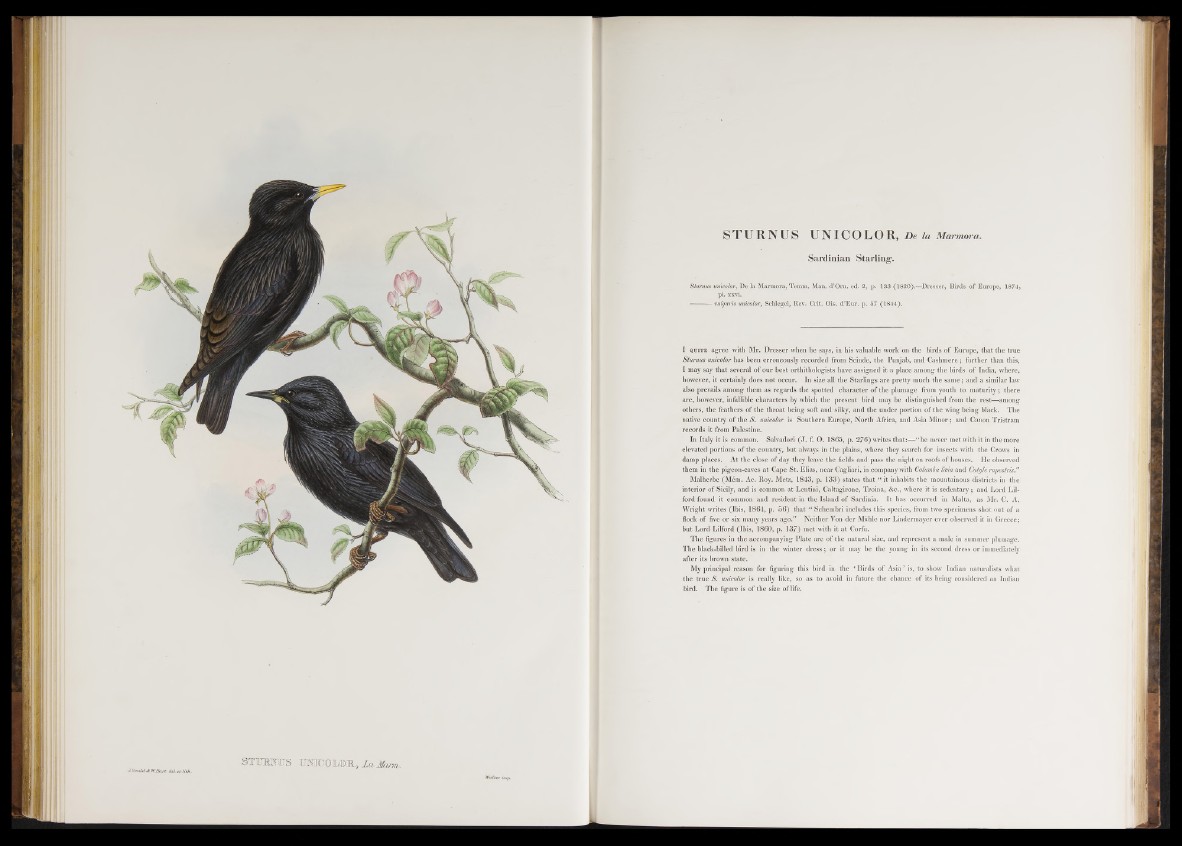
STURNUS UNICOLOR, De la Marmora.
Sardinian Starling*.
Sturnus unicolor, De la Marmora, Temm. Man. d’O rn. ed. 2, p. 133 (1820).—Dresser, Birds o f Europe, 1874,
pi. xxvi.
vulgaris unicolor, Schlegel, Rev. Crit. Ois. d ’E u r. p. 57 (1844).
I q u it e agree with Mr. Dresser when he says, in his valuable work on the birds o f Europe, that the true
Sturnus unicolor has been erroneously recorded from Scinde, the Punjab, and Cashmere ; further than this,
I may say that several o f our best orthithologists have assigned it a place among the birds of India, where,
however, it certainly does not occur.- In size all the Starlings are pretty much the same; and a similar law
also prevails among them as regards the spotted character of the plumage from youth to maturity; there
are, however, infallible characters by which the present bird may be distinguished from the rest—among
others, the feathers of the throat being soft and silky, and the under portion of the wing being black. The
native country of the S. unicolor is Southern Europe, North Africa, and Asia Minor; and Canon Tristram
records it from Palestine.
In Italy it is common. Salvadori ( J . f. O. 1865, p. 276) writes that:— “ he never met with it in the more
elevated portions o f the country, but always in the plains, where they search for insects with the Crows in
damp places. At the close of day they leave the fields and pass the night on roofs of houses. He observed
them in the pigeon-caves at Cape St. Elias, near Cagliari, in company with Columba lima and Cotyle rupestris."
Malherbe (Mem. Ac. Roy. Metz, 1843, p. 133) states that “ it inhabits the mountainous districts in the
interior of Sicily, and is common at Lentini, Caltagirone, Troina, &c., where it is sedentary; and Lord Lil-
ford found it common and resident in the Island o f Sardinia. It has occurred in Malta, as Mr. C. A.
Wright writes (Ibis, 1864, p. 5 6) that “ Schembri includes this species, from two specimens shot out o f a
flock of five or six many years ago.” Neither Von der Muhle nor Lindermayer ever observed it in Greece;
but Lord Lilford (Ibis, 1860, p. 137) met with it at Corfu.
The figures in the accompanying Plate are o f the natural size, and represent a male in summer plumage.
The black-billed bird is in the winter d ress; or it may be the young in its second dress or immediately
after its brown state.
My principal reason for figuring this bird in the ‘ B irds of Asia ’ is, to show Indian naturalists what
the true S. unicolor is really like, so as to avoid in future the chance of its being considered an Indian
bird. The figure is of the size of life.